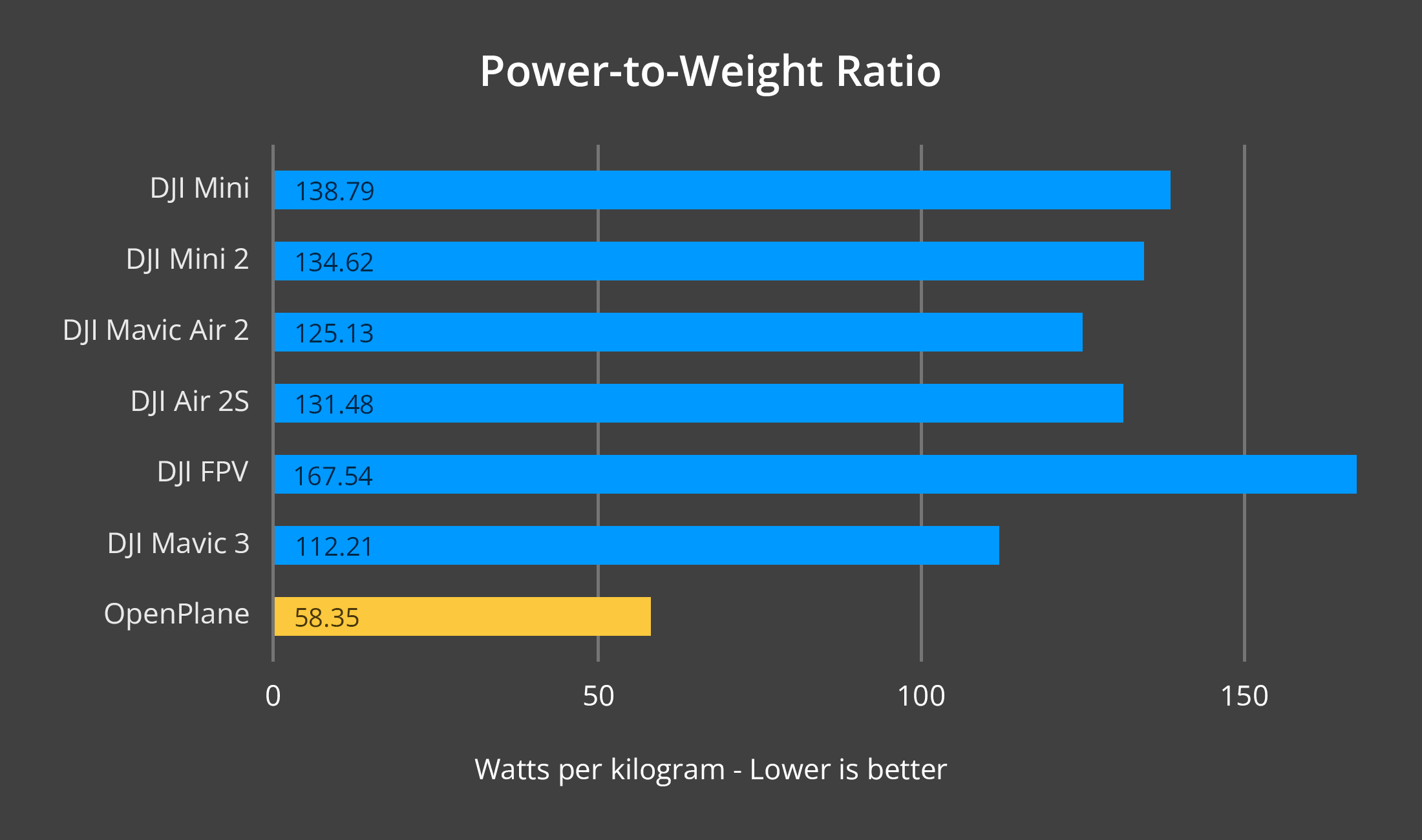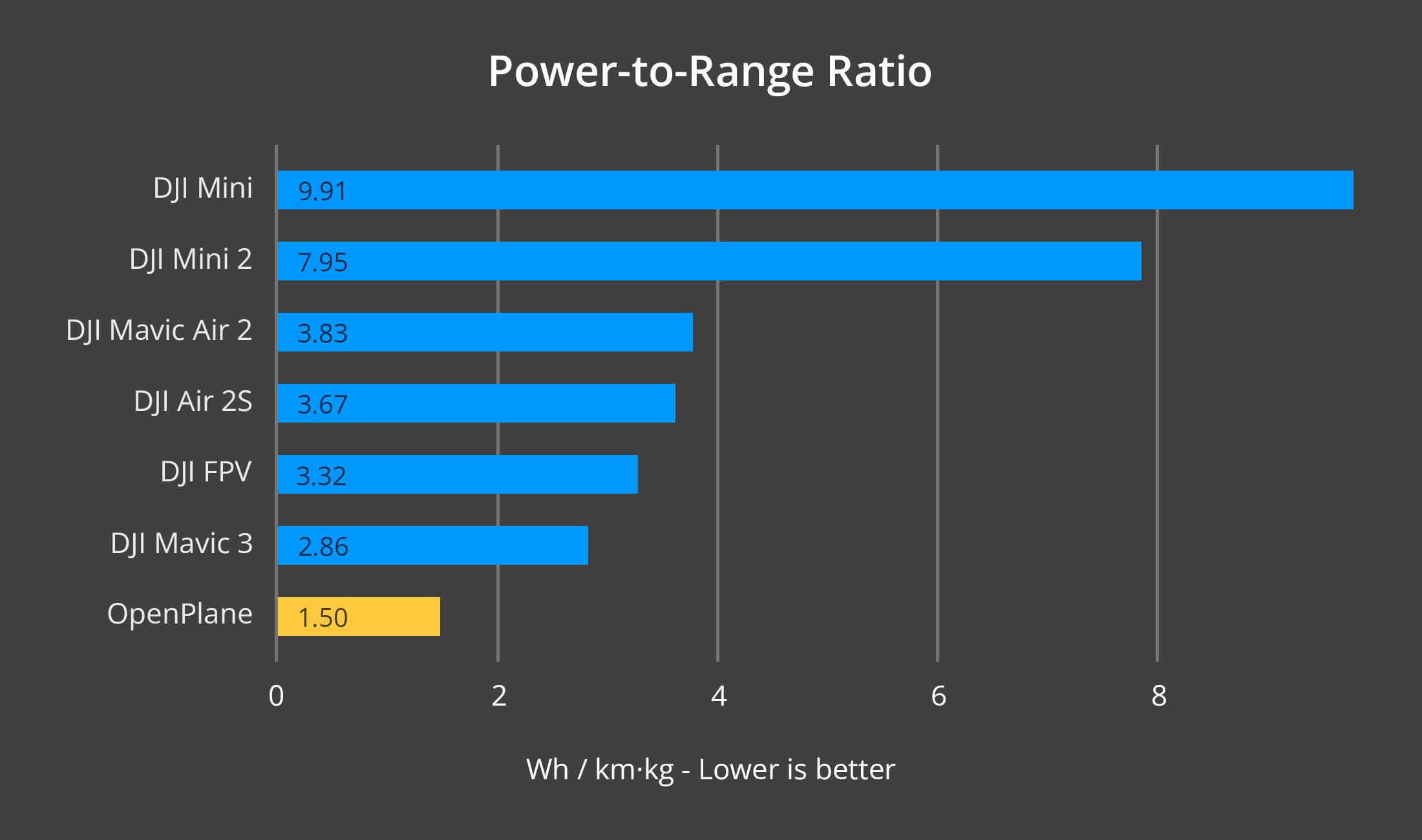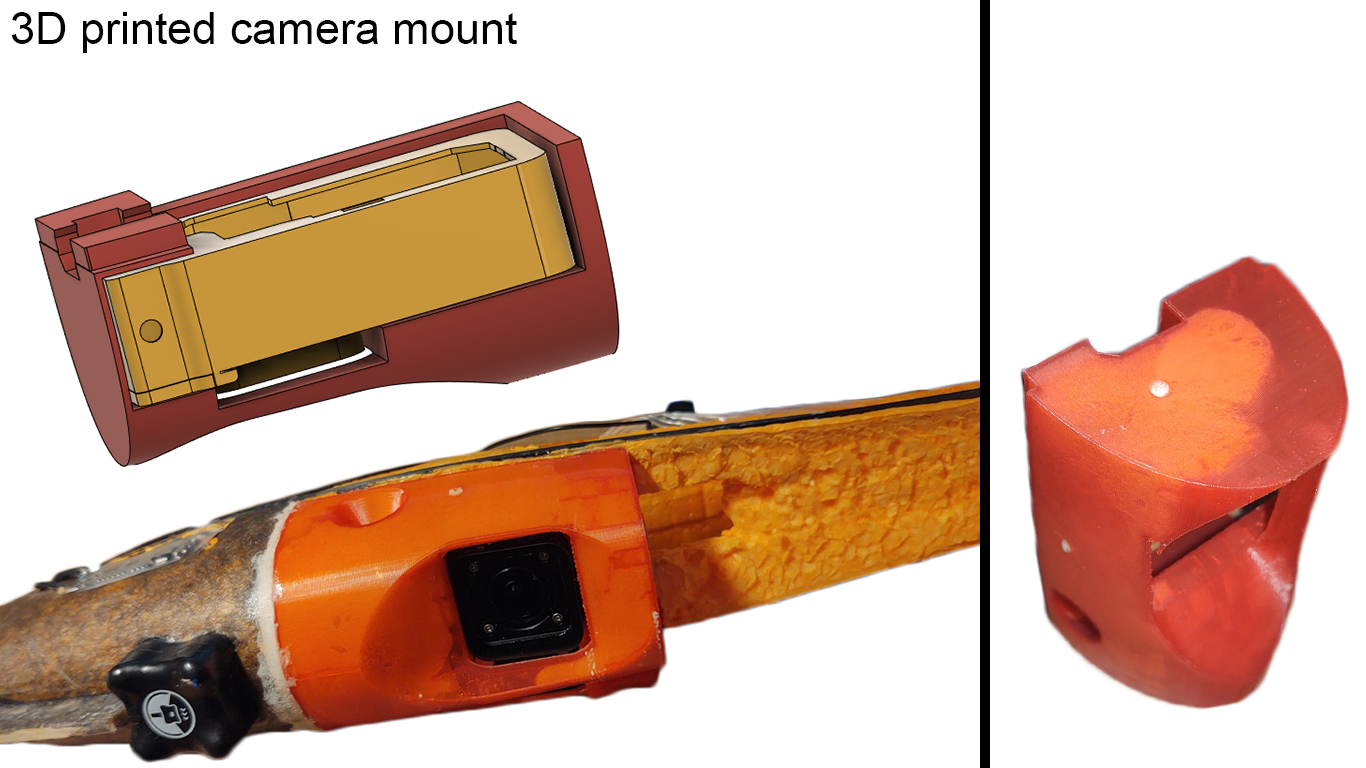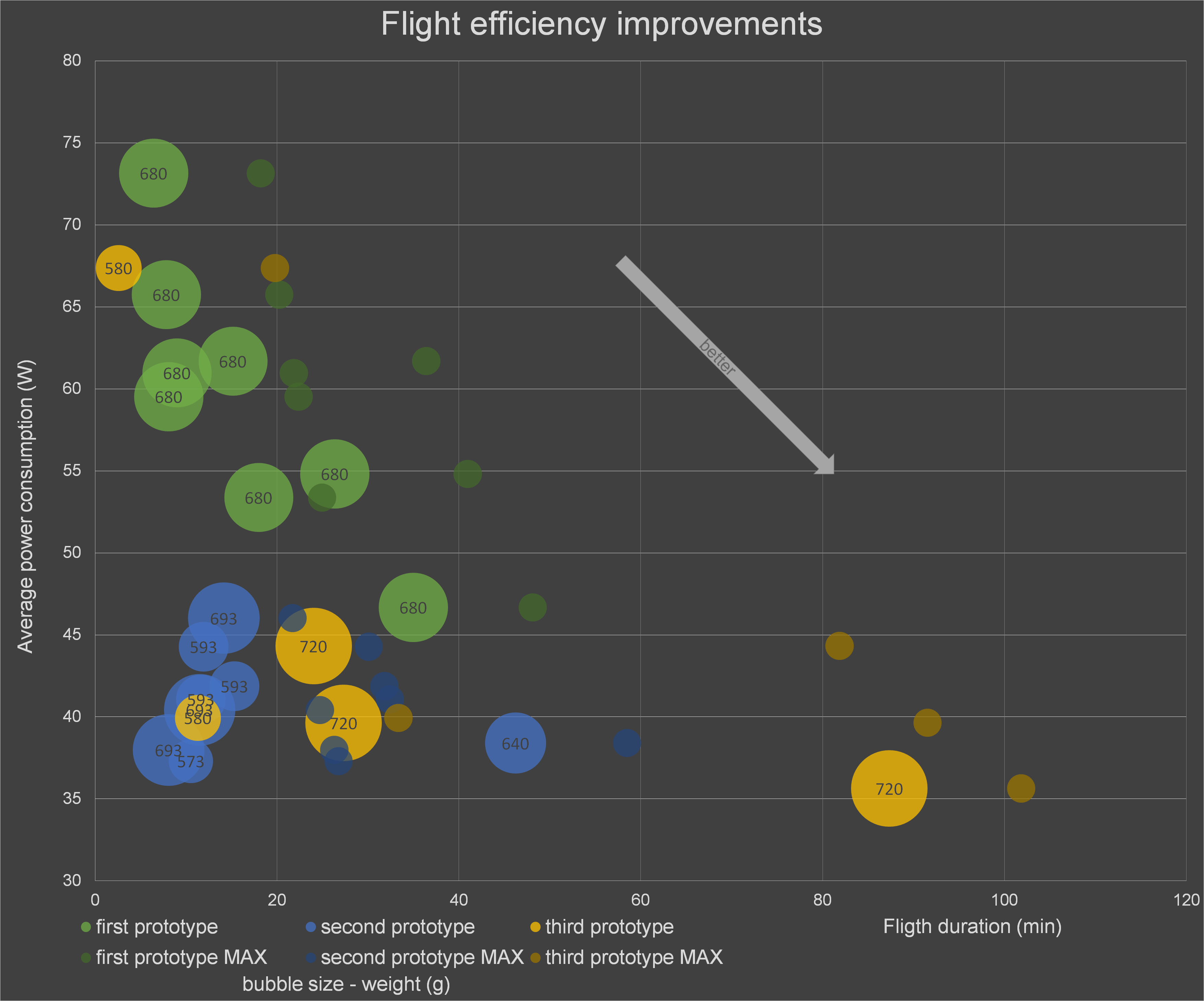-
Build video???
01/05/2023 at 21:35 • 1 commentHello everyone,
I finished this project about half a year ago. The results were well presented in this video:
However, as I have archived quite a lot of videos and photos from the construction of the aircraft, I was wondering if it would be worth making a short video of the construction of the model. If you are interested in something like that, please leave a comment in the section below the video.
-
OpenPlane VS multirotors comparison
02/16/2022 at 09:08 • 0 commentsThese two charts visualize the advantages of OpenPlane and planes in general. Compared to multirotors, the flight of the fixed wing aircrafts is much more energy efficient.

The first chart shows the average power consumption during the flight, calculated from the official specifications for each multirotor and measured from the OpenPlane test flights.

The differences are even more significant when accounting for the distances these drones can fly. Another known relation regarding the scale of the model is apparent in these charts. Heavier RC models have an advantage when compared with the lighter ones. OpenPlane, with a weight of 720 grams, is comparable to the DJI Air 2S (595 g), DJI FPV (795 g), and most closely to the DJI Mavic 3 (895 g), which is also the most efficient of the three and built with efficiency in mind.
-
Camera mount update
01/25/2022 at 07:06 • 0 comments
I've recently been working on a new camera mount system. I originally cut the mount directly into the fuselage and strengthened it by laminating carbon fabric to it. This process was quite time consuming and the mount was not durable enough.
I came up with this new mount printed on a 3D printer. It is printed with standard PLA, one wall thick and with the Cura`s new lightning support to save weight. I pushed the expandable glue inside through the three holes.It expanded into the cavities and protects the walls from collapsing. The mount weighs about 15 grams, which is slightly heavier than the original mount. Nevertheless, justified by simplicity and convenience.
-
Flights data
01/23/2022 at 20:32 • 0 comments
This chart shows how flight efficiency has improved throughout prototype development. There are data from flights made with three prototypes. Big bubbles represent the duration and average power draw of each flight. On many flights, I have only used a fraction of the energy stored in the battery, thus there are also small bubbles representing the flight duration, if the whole energy was used.
One can notice a huge reduction of average power consumption between the first and second prototype. This happened mainly due to a new more efficient motor and propeller. There is also a significant increase in flight durations between the second and third prototype thanks to a new battery I made.
Short flights have a higher average power consumption. The most power intensive part of the flight is takeoff and the other part significantly affecting this data is the time plane spend powered on on the ground before and after the flight. This causes a distortion between data from short and long flights. Therefore in the graph you can see flights with same plane and weight, but with different flight times and calculated maximum flight times.
In conclusion, the most compelling things are the increase in flight times from 40 minutes to over 80 minutes and the significant reduction of power consumption.
Open Plane Project
A project focused on the development of a compact, affordable and modular unmanned aerial system based on the EPP hand throwers.
 Matej Gurnak
Matej Gurnak


